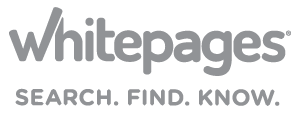What is Call Tracking And How Can You Identify The Details of Your Caller
If you run a call center or a large inbound contact team, then you know the importance of tracking various metrics that matter to you. Keeping track of factors such as first call resolution (FCR), customer satisfaction, average handling rate (AHR), and others can give you insights into how well your center and your agents are performing.
With so many communication options such as being able to fax using Outlook, another factor that can be crucial in measuring success is call tracking. What is call tracking? What are its benefits and how can you identify the details of your callers?
What is call tracking and how does it work?
Call tracking is a process that allows you to identify the source of any incoming calls. It usually happens because you have used a unique number that you have assigned to a particular marketing campaign, but can also be used for particular geographical areas. When any customer calls you using that number, the call goes through a special tracking system that gives you a list of details you can analyze such as:
- When the call was received (date and time).
- The caller’s phone number.
- How long the call lasted.
- If they had to wait to speak to an agent.
- Whether this is their first call or if they’ve called you before.
Why use call tracking?
1. Campaign effectiveness
When you run a specific marketing campaign, you want to know how effective your messaging has been as well as being able to track what your ROI is. By using call tracking, you are able to measure that effectiveness as well as being able to analyze customer behavior and identify how you can improve your overall sales process. You also want to know how people found you as they can come from different sources including an online directory.
There are two main ways of using call tracking but it is worth noting that either type will go to a number you have designated (and thus a particular team in most cases).
2. Dynamic numbers
Dynamic numbers are numbers that identify the exact source of your callers. For example, if they clicked on an ad, they would see one number to use, but if they found your website by an organic search, this would give them a different number. This is known as dynamic number insertion (DNI).
3. Static numbers
Static numbers are hard-coded on the landing page you choose and never change. While useful for customers to remember if needed, the downside is that you only have access to limited metrics. This means that they are not ideal for tracking the effectiveness of particular campaigns and can restrict your decision-making when it comes to scaling.
2. Improved customer experience
No matter what call center solution you use, you want your customers to have a good experience: low waiting times, well-handled calls, and so on. Any type of business is competitive and you should think of your call center agents as your frontline troops, winning the hearts and minds of your customer base.
With the help of call tracking, you can gain insights into more than just your marketing efforts; you can ensure that your contact center is performing to your expectations. What factors of that performance should you be looking at using call tracking?
- Call recording. Not only does this let you monitor the quality of agents’ performance, but it is also useful when it comes to training new agents or agents with low-performance metrics.
- Call monitoring. When done live, this again tracks the quality of performance but can also help with new agents as a manager or trainer can intervene in the call.
- Whisper messaging. This can help your agents know which marketing campaign led to the call before they speak to the customer.
- IVR system. Interactive voice response systems ensure calls go to the right person or team. This can be useful in tracking calls that are relevant to a particular campaign.
- Day and time reports. By monitoring when your customers call, you can identify peak periods and ensure better scheduling that can lower waiting times.
How to use and set up call tracking
You are possibly using multiple channels to connect with customers and potential customers and may be using everything from an enterprise fax solution to a live chat option. With so many channels, you want to know who is calling you as well as when and why. This is where call tracking comes into its own as it provides you with the data you need on different channels.
To set up call tracking, you will usually add a small piece of code that either goes into Google Tag Manager or the relevant element of your website. However, that snippet is designed to only look for a specific number so if you want to track multiple numbers, you may have to consider other options.
The other thing you can consider is to use a call tracking tool or vendor. If you do, then you need to identify the particular numbers you want to track. These often include the following:
- Organic sources. Callers who have found your details via a search.
- Direct sources. People who have gone directly to your site.
- Google Business. Callers who have found you via your Google Business profile.
- PPC (pay per click). Customers who have found you through an ad on a third-party site.
- Localized ads. Callers who have found you through geographically targeted ads.
- Social media posts. You can segment this into the different channels you operate on.
Of course, you may want to know exactly how effective different campaigns are so you know what marketing efforts are working well and providing a good ROI. While this can offer more accurate snapshots, it is also going to increase your call tracking costs. If on a tight budget, you may decide to group campaigns or channels together, but that will decrease the accuracy that comes with direct tracking.
The takeaway
Free to use image from Pixabay
Depending on the type of business you run, you may face multiple challenges, from knowing how to test mobile apps with Global App Testing to tracking your most important metrics. If you have any sort of contact center or team, however, you need to monitor how effective their work is. The same can be said for any campaigns you run; there is little point in spending money if you don’t know what results it produces.
Call tracking can help you cover a number of bases here, from monitoring the effectiveness of those campaigns to tracking the performance of your agents. It can also help you identify important demographic information such as the location of customers.



